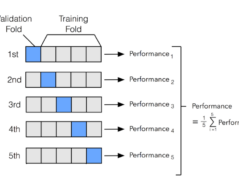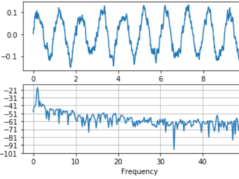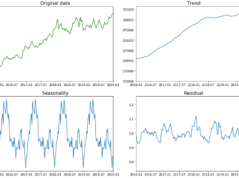
Convolutional Neural Networks: Financial Equity Markets
Introduction to Convolution Neural Networks
In the digital age, Convolutional Neural Networks (CNNs) stand as a symbol of transformative technology. A class of deep neural networks, CNNs have become ubiquitous, primarily due to their phenomenal success in processing images, videos, and speech data. However, the potential of these powerful algorithms extends far beyond these applications. In the financial equity markets, a domain notorious for its complexity and volatility, CNNs present an avenue for sophisticated data analysis and prediction. This post delves into the role of CNNs in financial markets, shedding light on their structure, functionality, applications, challenges, and a simple example demonstrating their use.
Unique Structure and Functionality of CNNs
At the heart of the prowess of CNNs lies their unique architecture. Unlike traditional neural networks, which have a fully connected design, CNNs encompass convolutional, pooling, and fully connected layers, each serving a distinct purpose.
Convolutional layers form the core of CNNs. They perform a mathematical operation known as convolution on the input data. This operation involves sliding a filter or kernel over the input data and performing element-wise multiplication followed by a sum. Convolution allows CNNs to identify local patterns in the input data, such as edges and textures in images or trends and seasonality in time-series data.
Pooling layers follow convolutional layers and serve to reduce the dimensionality of the data. They summarize the output of the convolutional layers, preserving the essential features while making the network less sensitive to small variations in the input data.
Finally, fully connected layers take the high-level, abstract representations learned by the convolutional and pooling layers and use them to perform the final task, such as classification or regression.
CNNs display an impressive degree of parameter efficiency. Thanks to their weight-sharing mechanism, they require fewer parameters than traditional neural networks. Each filter in a convolutional layer uses the same set of weights for different parts of the input, thus reducing the number of unique weights the network needs to learn.
Lastly, CNNs stand out for their ability to recognize spatial and temporal patterns. They understand input data as having a spatial structure and exploit this property to learn patterns that a traditional neural network might miss.
Practical Applications of CNNs in Financial Markets
CNNs find applications in many areas, and the financial markets represent a promising domain for these powerful algorithms. In financial equity markets, where vast amounts of data get generated every second, CNNs provide a robust tool for analysis and prediction.
Market trend identification serves as a primary application of CNNs. Traders and investors need to keep a pulse on market trends to make informed decisions. CNNs can analyze time-series data of stock prices, identify patterns and trends, and provide insights that can guide trading decisions.
High-frequency trading represents another area where CNNs shine. Decisions must be made in fractions of a second in high-frequency trading. CNNs, with their ability to quickly process large volumes of data and make predictions, provide a significant advantage in this domain.
Furthermore, CNNs contribute to enhancing financial security. Financial fraud poses a severe risk in the financial markets. CNNs can learn to identify patterns associated with fraudulent transactions, thereby assisting in fraud detection.
Challenges in Implementing CNNs
Despite their undeniable advantages, CNNs bring along their set of challenges. First, they require extensive data to function optimally. While this might not pose a problem in domains like image processing, where vast datasets exist, it can be a hurdle in financial markets. Financial data often comes with challenges such as high volatility, noise, non-stationarity, and even scarcity for certain data types or markets.
Second, the complexity of CNNs can pose difficulties in understanding and interpreting the results. Known as the 'black box' problem, this lack of interpretability means that while a CNN might make accurate predictions, understanding 'why' and 'how' it made those predictions might not be straightforward. This lack of transparency can be a significant issue in financial markets, where accountability and interpretability are crucial.
Illustrative Example: CNNs in Action
Let's consider a simple example to understand the workings of CNNs better. Suppose we have a dataset of stock prices for a particular equity over a certain period. This dataset forms a time series – a type of data that CNNs handle exceptionally well.
A CNN can scan through this time-series data, much like scanning an image, and learn the underlying patterns. For instance, it might learn that a sharp price increase often follows a particular combination of volume and volatility. With this knowledge, CNN can then predict future stock prices.
However, this example also highlights the 'black box' challenge discussed earlier. While CNN might predict that a stock's price will rise, it does not provide an explicit reason for this prediction. The prediction is based on the patterns it has learned, and these patterns, encoded as weights in the network, are not readily interpretable by humans.
Python Code for CNNs:
The Python code provided simulates a simple version of a Convolutional Neural Network (CNN) for educational purposes, using only basic Python and sklearn's accuracy_score function. It uses a basic form of multidimensional financial data generated using numpy.random.rand. The data is split into training and testing sets, and a simple CNN is trained on the training set.
The SimpleCNN class has two methods: fit and predict. The fit method sets the weights randomly. The predict method calculates the dot product of the weights and the input data, sums up the results, and checks if the sum is greater than 0.5 to return a binary prediction.
After training the model, it makes predictions on both the training and testing sets, and computes the accuracy of those predictions.
The code output is a tuple containing the training and testing accuracy. As the model is very simple and the weights are randomly set, the accuracy is around 50%, which you would expect from random guessing.
Please note that this is a greatly simplified CNN version and is unsuitable for real-world applications. Real-world CNNs have a much more complex structure and learning process and are typically implemented using deep-learning libraries such as TensorFlow or PyTorch.
# Please note that this is a simplified version of a CNN model, intended for educational purposes import numpy as np from sklearn.metrics import accuracy_score # Simulating a multidimensional financial data n_samples = 1000 n_timesteps = 60 n_features = 10 data = np.random.rand(n_samples, n_timesteps, n_features) # Generating random binary labels labels = np.random.randint(2, size=n_samples) # Splitting data into training and testing sets split_idx = int(n_samples * 0.8) train_data, test_data = data[:split_idx], data[split_idx:] train_labels, test_labels = labels[:split_idx], labels[split_idx:] # Simulating a CNN class SimpleCNN: def __init__(self): self.weights = None def fit(self, data, labels): _, n_timesteps, n_features = data.shape self.weights = np.random.rand(n_timesteps, n_features) def predict(self, data): predictions = np.sum(np.sum(data * self.weights, axis=2), axis=1) > 0.5 return predictions.astype(int) # Training the CNN cnn = SimpleCNN() cnn.fit(train_data, train_labels) # Making predictions train_predictions = cnn.predict(train_data) test_predictions = cnn.predict(test_data) # Evaluating the model train_accuracy = accuracy_score(train_labels, train_predictions) test_accuracy = accuracy_score(test_labels, test_predictions) train_accuracy, test_accuracy
Output
(0.52125, 0.46)
CNNs represent a powerful tool in the realm of financial equity markets. Their unique structure and functionality allow them to process large volumes of data, recognize patterns, and make predictions, providing significant value in market trend identification, high-frequency trading, and fraud detection. However, their application in financial markets does not come without challenges—the need for extensive data and interpretation complexity present hurdles that must be carefully considered.
As the world increasingly embraces the era of AI-driven finance, CNNs will undoubtedly play a pivotal role. However, their use must be accompanied by a clear understanding and acknowledgement of their strengths and limitations. By harnessing the power of CNNs responsibly, we can look forward to a future of financial markets that's not just smarter and more efficient but also more secure.
Follow Quantace Research
-------------
Why Should I Do Alpha Investing with Quantace Tiny Titans?
1) Since Apr 2021, Our premier basket product has delivered +44.7% Absolute Returns vs the Smallcap Benchmark Index return of +7.7%. So, we added a 37% Alpha.
2) Our Sharpe Ratio is at 1.4.
3) Our Annualised Risk is 20.1% vs Benchmark's 20.4%. So, a Better ROI at less risk.
4) It has generated Alpha in the challenging market phase.
5) It has a good consistency and costs 6000 INR for 6 Months.
-------------
Disclaimer: Investments in securities market are subject to market risks. Read all the related documents carefully before investing. Registration granted by SEBI and certification from NISM in no way guarantee performance of the intermediary or provide any assurance of returns to investors.
-------------
#future #machinelearning #research #investments #markets #investing #like #investment #assurance #management #finance #trading #riskmanagement #success #development #strategy #illustration #assurance #strategy #mathematics #algorithms #machinelearning #ai #algotrading #data #financialmarkets #quantitativeanalysis #money






